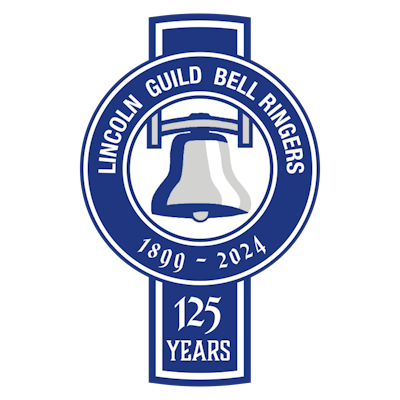Celebrating Lincolnshire Day! | |
 |
|
October 1st 2010 marked the fifth official �Lincolnshire Day� and historically, the date commemorates the Lincolnshire Rising of 1536 against King Henry VIII and the dissolution of the monasteries. The rising started at Louth on the 1st October 1536 and quickly gained support as it marched towards Lincoln. By the time it reached Lincoln there were 40,000 supporters camped around Lincoln Cathedral. The day was chosen to celebrate the county�s history and culture and all that the county has to offer. As expected the county�s ringers did their part to celebrate Lincolnshire Day by organising a number of Quarter Peals. In the morning a Quarter Peal of Lincolnshire Surprise Major was scored at Kirton in Lindsey. The back six bells at Kirton in Lindsey were cast in 1798 by one of the county�s bellfounders, James III Harrison of Barton upon Humber. This was also Dave Burkitt�s first Quarter of Lincolnshire!
Lincoln Diocesan Guild | |
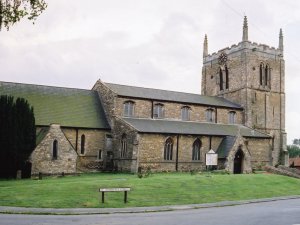 |
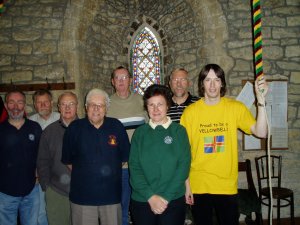 |
John Ketteringham, Barrie Dove, Janet Clarke, Robert Jordan, Chris Woodcock. |
|
This was followed at lunch time by a Quarter Peal of Plain Bob Minimus on the four ancient bells dating
from 1616 & 1636 at the Parish & Civic Church of St. Mary le Wigford, Lincoln, which stands in the
City centre on the High Street. They are the oldest peal of bells in the City as well as the Church being
the oldest Church in the City, with the tower dating from 980AD. A special date touch of 1536 was rung
to mark the 1536 Lincolnshire Rising. | |
|
Saint Mary le Wigford Society CITY of LINCOLN, Lincolnshire, Parish & Civic Church of St. Mary le Wigford Friday, 1 October 2010 in 51 mins (6-1-17) 1536 Plain Bob Minimus (being 64 extents) 1 Yvonne A. Woodcock 2 Jean Williams 3 Angela Holt 4 Christopher C. P. Woodcock (C) |
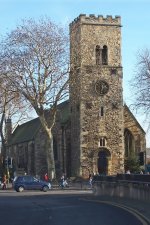 |
|
Rung to celebrate Lincolnshire Day which also marks the anniversary of the Lincolnshire Rising of 1536. (This date touch was specially chosen to mark the 1536 Lincolnshire Rising). Longest length for: 3. Longest length of Minimus for all. |
|
Then in the afternoon a Quarter Peal in a new Delight Major method was rung and named especially for
Lincolnshire Day being named "Yellowbelly Delight Major" (which is Lincolnshire below the treble).
This was rung at the Church of St Giles, Lincoln. The peal of eight bells at this Church were the gift
of the City, all being cast in 1728 by Abraham II Rudhall of Gloucester, to the City Corporation Church
of St. Peter at Arches which originally stood on the High Street in the City centre next to the Guildhall.
However when this Church was demolished in the 1920�s the bells were transferred to the new Church of St. Giles. | |
|
Lincoln Diocesan Guild CITY of LINCOLN, Lincolnshire, St. Giles Friday, 1 October 2010 in 50 mins (18-0-2) 1344 Yellowbelly Delight Major (Place Notation: X36X1458X56X18X14X58X36X78-12) (Pronounced: "Yellerbelly") 1 Sue L. Waterfall 2 Janet M. Clarke 3 Geoffrey F. Bryant 4 Matthew B. Jeffery 5 Philip R. Wild 6 Stephen L. Clarke 7 Robert H. Jordan 8 Christopher C. P. Woodcock (C) Rung to celebrate Lincolnshire Day which also marks the anniversary of the Lincolnshire Rising of 1536. First blows in the method: X36X1458X56X18X14X58X36X78-12 which the band wish to provisionally name: Yellowbelly Delight Major. (Special thanks to Stephen for standing in at the last minute). |
|
 |
 |
Robert Jordan, Janet Clarke, Stephen Clarke, Sue Waterfall, Geoff Bryant. |
|
The day ended with a Quarter Peal in the evening at Bardney. It was originally intended to ring a 1536 of
Minor however one of the ringers could not stand the loud volume of the bells in the ringing chamber and
had to stand down so a Quarter Peal of Grandsire & Plain Bob Doubles was rung on the back five instead.
It was most fitting that a Quarter Peal was rung at Bardney as a number of the monks from Bardney Abbey
took part in the Lincolnshire Rising of 1536 and six of the Bardney monks were later executed for their
involvement in the rising against King Henry VIII. | |
|
Lincoln Diocesan Guild BARDNEY, Lincolnshire, St. Lawrence Friday, 1 October 2010 in 43 mins (8 cwt) 1260 Grandsire & Plain Bob Doubles (being: 720 Grandsire & 540 Plain Bob) 1 Sue L. Waterfall 2 Yvonne A. Woodcock 3 Christine J. Jackson 4 Philip R. Wild 5 Christopher C. P. Woodcock (C) Rung to celebrate Lincolnshire Day which also marks the anniversary of the Lincolnshire Rising of 1536. Six monks from Bardney Abbey were executed for their role in the Lincolnshire Rising. (Rung on the back five after one of the ringers could not stand the loud volume of the bells in the ringing chamber). (Webmaster's note : The ringer in question who could not stand the loud volume of the bells was in fact the webmaster himself. Tinnitus and Bellringing are not always a great combination!! Sorry about that!) |
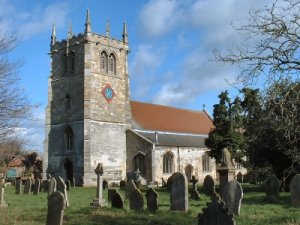 |
This was not the end of the celebrations as the following day, Saturday 2nd October a Quarter Peal of
Lincolnshire Surprise Major was rung on the heavy majestic peal of eight bells at St. James� Church
Louth. They are the heaviest peal of eight in Lincolnshire, with the tenor weighing just over 31 cwt.
It was felt that as the Lincolnshire Rising had started at St James� Church Louth on 1st October 1536
that a Quarter Peal should be rung at this Church. The rising started on 1st October 1536 after Thomas
Kendell, vicar of Louth, preached a sermon during Evensong about King Henry VIII�s planned closure of
the Monasteries and confiscation of Church wealth. Then on the following day, 2nd October 1536 the church
bells at Louth were rung to call the protesters together and the rising marched towards Lincoln Cathedral.
Thomas Kendell was later executed in 1537 for his involvement/role in the Lincolnshire Rising. | |
|
Lincoln Diocesan Guild Louth, Lincolnshire, St. James Saturday, 2 October 2010 in 55 mins (31-0-7) 1280 Lincolnshire Surprise Major (contains Queens & Tittums) Composed: Glenn A. A. Taylor 1 Geoffrey F. Bryant 2 Sue L. Waterfall 3 Michael E. Stracey 4 David Fox 5 Jonathan P. Clark 6 Matthew B. Jeffery 7 Philip R. Grover 8 Christopher C. P. Woodcock (C) Rung to celebrate Lincolnshire Day which also marks the anniversary of the Lincolnshire Rising of 1536. |
 |
The Lincolnshire Rising started here at St James� Church Louth during Evensong on 1st October 1536.
On 2nd October 1536 the Church bells at Louth were rung to call the protesters together and the rising
marched to Lincoln. | |
 |
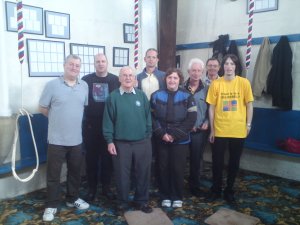 |
outside St. James� Church Louth. |
Sue Waterfall, Mick Stracey, David Fox, Chris Woodcock. |
I think we can safely say Lincolnshire Day is now firmly in Lincolnshire Ringers diaries and we now look forward to ringing the county�s bells next year on 1st October to celebrate Lovely Lincolnshire! Thanks to all the ringers who came out and joined in the celebratory ringing to mark our County�s Day and to all the Churches and officials who allowed us to ring their bells!
Christopher C. P. Woodcock | |
Additional Quarter Peals | |
|
Lincoln Diocesan Guild Butterwick, near Boston, Lincolnshire, St. Andrew Friday, 1 October 2010 in 44 mins 1260 Plain Bob Doubles 1 Audrey Harrison 2 David Bennett 3 Aubrey Pepper 4 Thomas J. Freeston 5 David Collin (C) 6 J. William Daubney Rung to commemorate Lincolnshire Day - 01/10/10. |
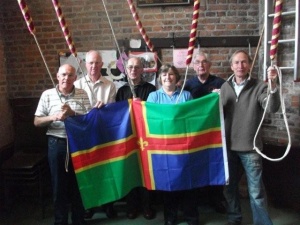 |
Audrey Harrison, Tom Freeston, David Collin. |
|
The above quarter peal was rung to celebrate Lincolnshire Day. When the photographer from the local newspaper turned up and asked if the band could stop for a few minutes tower captain, Tom Palmer, explained that unfortunately that was not possible, so the reporter took some photos of the ringers in action. The band kept ringing and scored a good quarter.
John R. Ketteringham | |
